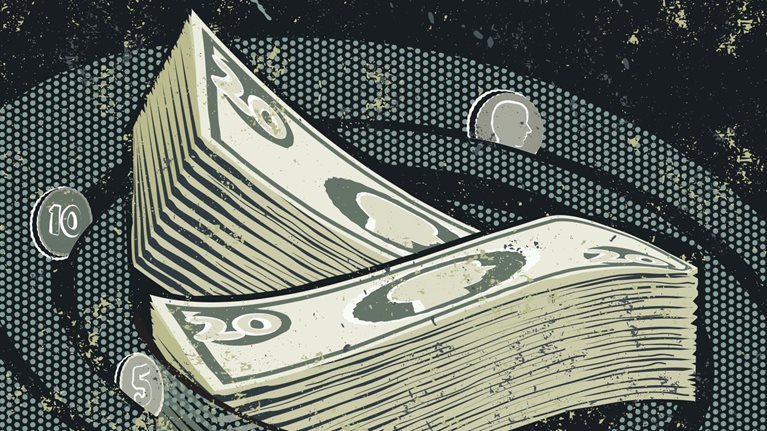Interest rates, which have been so low for so long that consumers and businesses have come to consider low rates an entitlement, are starting to creep upward, prompting new concerns and debates. Will higher rates undercut the economic recovery? Should the Federal Reserve do more to hold rates down, or did the central bank already err by leaving them low for too long, feeding the housing and credit bubbles of recent years? As Fed policymakers prepare to meet this week to discuss these matters, it's worth dispelling some of the most common misconceptions about interest rates.
1. The Fed controls interest rates.
Yes, the Federal Reserve can change its federal funds rate—the overnight rate charged on loans between banks—and those shifts affect short-term rates on business loans and consumer loans. But long-term interest rates, such as those on a 10-year Treasury bond or on 30-year mortgages, are determined by the markets and are influenced by inflation trends, government budget deficits, and the overall demand for and supply of capital over time.
The limits of the Fed's powers were apparent recently when it began its second round of "quantitative easing"—an effort to lower long-term rates by pumping more money into the economy. Those rates did fall in the weeks leading up to the program's launch in November, but they rose sharply soon afterward. Why?
First, signs of a strengthening economy prompted many analysts to raise their growth forecasts for this year, implying that the demand for capital will rise as well—and greater demand for capital translates into higher rates. Second, the tax-cut deal that the White House and congressional leaders struck in December will boost government borrowing this year, adding to the demand for capital. Finally, some investors worry that, as the economy gains momentum, the Fed's program could lead to rising inflation, and such fears could lead to higher interest rates.
2. Low interest rates are here to stay.
Not so. Interest rates are headed higher, and not just because the Fed will eventually raise short-term rates once the economy speeds up. Our recent research shows that the global demand for capital is rising fast as emerging markets embark on one of the biggest building booms in history. Rapid economic growth and urbanization in developing nations, particularly China, is fueling demand for housing, roads, ports, water and power systems, machinery, and equipment. Global investment demand could rise from $11 trillion today to $24 trillion per year by 2030.
Meanwhile, global saving is unlikely to rise as fast, as countries around the world spend more on pensions, health care, and other needs of their aging populations. In some forecasts, global saving will fall short of investment demand by as much as $2.4 trillion in 2030. And because, by definition, saving and investment must equal each other, the gap will push interest rates up.
3. US policymakers should keep rates low so consumers will spend more and boost the economy.
American households are now saving more than they were during the recent credit bubble; the personal saving rate increased from 2 percent in 2007 to nearly 6 percent in 2010. Not only does this help people save for retirement, it's also good for the nation's long-term economic health: Higher national saving will help fund more national investment. If anything, policymakers should encourage consumers to save even more.
But wouldn't more personal saving dampen economic growth? Not if corporations and the government increase investments that expand the nation's capacity to produce more and better goods and services. We've invested too little in the past, particularly in infrastructure. The American Society of Civil Engineers estimates that the United States needs to spend an additional $2.2 trillion over five years—on top of our current $400 billion annual investment—on transportation, water, energy, schools, waste disposal and public parks to renew the nation's crumbling infrastructure and help meet growing demand.
These kinds of investments would provide additional fuel for economic growth, offsetting slower gains in consumer spending. And now is the time to start, while interest rates are still near historically low levels.
4. The mortgage interest deduction is necessary to support the housing market and the economy.
Hardly. The deduction is a favorite among home owners, real estate agents, and lenders, but its broader economic benefits are debatable. Under current law, taxpayers can deduct their interest payments on up to $1 million in mortgage debt on both their primary residences and their second homes, and they can also deduct their interest payments on up to $100,000 in home-equity loans. The law thus lowers the cost of home ownership and creates incentives to take on extra mortgage debt—spurring the real estate and finance industries as well as consumer spending.
But these gains come at a cost: The deduction lowers federal revenues (by a projected $104 billion in 2011), thereby adding to the budget deficit. It also encourages households to take on more debt than they would otherwise and thus helped feed the housing bubble that led to the financial crisis. Canada, by contrast, has no such mortgage tax deduction, and its housing market is healthier and less leveraged, avoiding US-style booms and busts. The proposal by President Obama's fiscal commission to sharply limit the mortgage interest deduction was a step in the right direction.
5. Higher interest rates are bad for the economy.
Actually, in several ways, somewhat higher interest rates would be better for the economy than the extremely low rates of recent years. They would benefit savers (particularly retirees and pension funds) and therefore encourage greater household saving.
They would also limit financial bubbles, restraining speculative and heavily leveraged investment while encouraging more investment that would actually raise the economy's potential growth rate, such as expanding the country's broadband network, developing new green technologies, and rebuilding aging infrastructure.
Higher rates also would focus executives' attention on the return that companies earn on their capital, prodding them to make sure they get more bang for each buck. This could boost the nation's productivity, which is the key to raising standards of living over time.
Susan Lund is the research director at the McKinsey Global Institute. Richard Dobbs is the institute's director and a senior partner in McKinsey's Seoul office.
This article originally ran in Washington Post.


